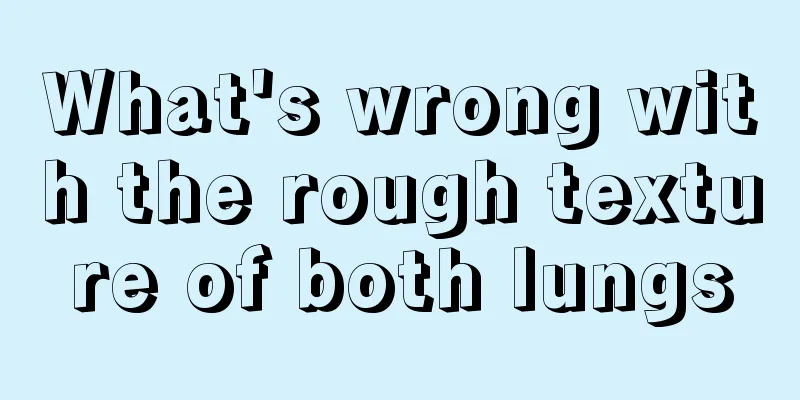Classification of hyperlipidemia drugs

|
Many people may not be aware of the harm that high blood lipids bring to the human body. In fact, many diseases in the elderly are caused by high blood lipids. For example, the most serious disease, hypertension, may be closely related to high blood lipids. Moreover, the most direct disease caused by high blood lipids is cerebral infarction caused by atherosclerosis. When the elderly find that they have high blood lipids, what drugs can be used to treat it? 1. Lipid-lowering drugs Lipid-lowering drugs are drugs that lower blood lipid levels. Blood lipids are the general term for neutral fats (triglycerides and cholesterol) and lipids (phospholipids, lipids, sterols, steroids) in plasma, and are widely present in the human body. They are essential substances for the basic metabolism of living cells. Generally speaking, the main components of blood lipids are triglycerides and cholesterol. 2. Five major categories of lipid-lowering drugs 1. Statins Statins are trimethylglutaryl coenzyme A (HMG-CoA) reductase inhibitors, also known as cholesterol biosynthesis enzyme inhibitors. They are the rate-limiting enzyme for cholesterol synthesis in cells and are currently the most widely used class of lipid-lowering drugs in clinical practice. Since the English names of these drugs all contain "statin", they are often referred to as statins. There are currently five types of statins available for clinical use: (1) atorvastatin, commonly used drugs are Pfizer's Lipitor and Alpha; (2) lovastatin, commonly used drugs are Meclizine, Rovanin, Loto, Lozhite, etc., and the main ingredient of Xuezhikang is also lovastatin; (3) simvastatin, commonly used drugs are Zocor, Risode, Jingbishuxin, Zezhihao, Suzhi, Xinke, etc.; (4) pravastatin, commonly used drugs are Pravastatin and Meperidine; (5) fluvastatin, commonly used drugs are Lescol. The most common adverse reactions to this type of drug are mild gastrointestinal reactions and headaches. Myotoxicity may occur when used in combination with other lipid-lowering drugs. 2. Fibrates The main indications of fibrates are: hypertriglyceridemia or mixed hyperlipidemia with elevated triglycerides as the main feature. The fibrate drugs currently used in clinical practice mainly include ciprofibrate, bezafibrate, fenofibrate and gemfibrozil. According to clinical practice, these drugs can effectively reduce triglycerides by 22% to 43%, while reducing TC by only 6% to 15%, and have the effect of increasing high-density lipoprotein to varying degrees. Common adverse reactions of this drug include gastrointestinal reactions, nausea, and diarrhea, and severe cases can cause liver damage. 3. Niacin Niacin drugs belong to the B vitamins. When the dosage exceeds the dose of their vitamin function, they can have a significant lipid-lowering effect. This type of drug has a wide range of applications and can be used for any type of hyperlipidemia except homozygous familial hypercholesterolemia and type I hyperlipoproteinemia. However, the immediate-release formulation of this drug has serious adverse reactions, so we generally do not use it alone. The medical community is still unclear about the lipid-lowering mechanism of niacin. Sustained-release preparations significantly reduce redness, mainly facial flushing. 4. Bile acid chelators These drugs are also called bile acid sequestrants. There is Cholestyramine, and commonly used drugs include colestyl. Common adverse reactions of this drug include gastrointestinal reactions, nausea, constipation or diarrhea, intestinal obstruction or headache, etc. 5. Cholesterol absorption inhibitors This type of drug mainly achieves the purpose of lowering blood lipids by inhibiting the absorption of cholesterol in the intestine and bile. Currently, there are very few drugs of this type on the market. 3. Seal oil effectively lowers blood lipids Seal oil is rich in nutrients such as EPA, DHA, DPA, etc., which can help lower blood lipids and soften blood vessels. It promotes and improves the body's immunity, enhances memory, has anti-cancer and anti-cancer and beauty effects, and has many benefits to human health. |
<<: Chinese medicine prescription for hyperlipidemia
>>: Recipe for regulating high blood lipids
Recommend
Acupuncture treatment for stroke sequelae has very good results
The sequelae of stroke include facial paralysis, ...
What are the effects of regulating meridians?
In traditional Chinese medicine theory, the human...
Causes of redness, swelling and pain at the tip of the nose
The nose is a key to people's sense of smell,...
What are the functions of Cassia seed
Determinant is a common herb and also a medicinal...
Is coarse needle aspiration more common for thyroid cancer?
Thyroid cancer is not often treated with a core n...
There are many ways to prevent rectal cancer in life
As a common disease, rectal cancer can seriously ...
How to wash your face after eyelash extensions
With the rise of aesthetic concepts such as big e...
Which is better for weight loss, red bean, mung bean or black bean
Red beans, mung beans and black beans are all rel...
What foods can effectively prevent liver cancer? These foods can effectively prevent liver cancer
Bitter melon plays an important role in human hea...
The four main symptoms of drug-induced hepatitis
Drug-induced hepatitis mostly occurs in people wh...
What are the specific early symptoms of lung cancer? Three early symptoms of lung cancer: early detection and early treatment
Early lung cancer has some symptoms, which are no...
What to eat when you have bone cancer
What should you eat if you have bone cancer? In o...
3 ways of language compensation after laryngeal cancer surgery
The larynx is an important organ of pronunciation...
How to make a cervical pillow
Due to the prevalence of vertebral pain, ordinary...
Can I test it on the fifth day after frozen embryo transfer?
During the IVF process, multiple embryos will be ...









